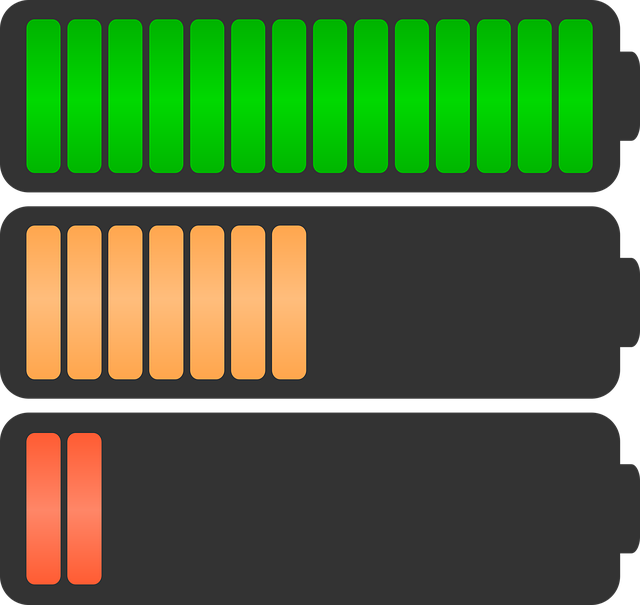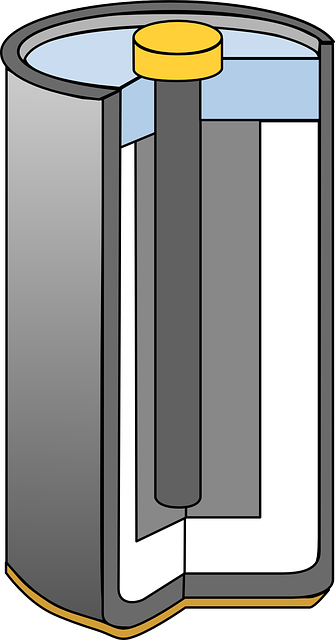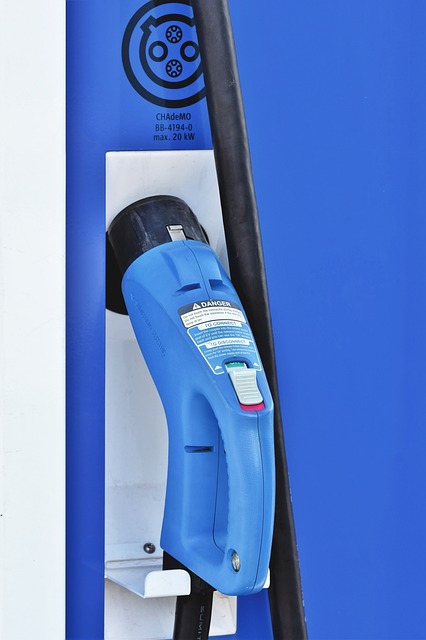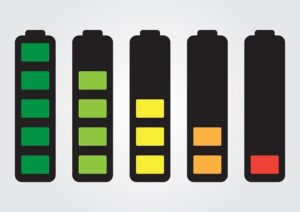When you notice your tablet's battery life is shorter than usual or it won't hold a charge at all, replacing the battery may resolve these issues. Before resorting to a replacement, ensure there are no blockages or damage in the charging port and that your charger is authentic for your device model. Also, check your settings for any power-saving modes or misconfigurations that could be affecting battery life. If cleaning the port, adjusting settings, or battery calibration don't help, a faulty battery is likely to blame. A professional can safely replace the battery, which is often more cost-effective than purchasing a new tablet, especially if the issue isn't user-induced but a manufacturing defect. Regularly recalibrate your battery after replacement by charging it fully and then draining it completely for optimal performance. To maintain your tablet's battery health, reduce screen brightness, limit background app usage, and utilize battery-saving modes provided by the manufacturer. If you're not comfortable replacing the battery yourself, professional assistance is recommended to ensure the task is done correctly and safely. Regular maintenance and understanding how apps affect battery consumption are key to sustaining your replacement battery's longevity. In summary, when facing persistent power issues with your tablet, a battery replacement by a certified technician might be necessary for long-term device performance and reliability.
Navigating tablet power issues can be a common yet vexing challenge. Whether your device is struggling to hold a charge or consistently shutting down unexpectedly, understanding the root cause is key to resolving these hiccups. This article offers insightful guidance tailored to tackle such power problems effectively. We’ll explore the top three tips for addressing tablet battery woes, including a clear step-by-step process on how to safely replace your battery should you decide to do it yourself. From there, we’ll provide practical troubleshooting steps to diagnose and resolve power-related issues before opting for a battery replacement. Additionally, learn how to maximize your tablet’s battery longevity post-replacement and when professional assistance is the most prudent course of action. Dive into our comprehensive guide to keep your tablet powered and performing at its best.
- Understanding Common Power Issues in Tablets
- Step-by-Step Guide to Replace Battery in Your Tablet
- Troubleshooting Tips for Tablet Power Problems Before Replacement
- How to Safely Remove and Install a New Battery in Your Tablet
- Maximizing Battery Life After Replacing the Battery in Your Tablet
- When to Consider Professional Help for Tablet Power Issues
Understanding Common Power Issues in Tablets

When encountering power problems with tablets, it’s crucial to pinpoint the underlying issue. One common cause is a degraded or old battery that can no longer hold a charge as effectively as before. Over time, the chemistry within lithium-ion batteries changes, leading to reduced capacity and an increase in the frequency of recharging. If your tablet is consistently losing power quickly, or if it won’t turn on at all, it may be time to consider replacing the battery. This is often more cost-effective than purchasing a new device, especially since batteries can fail for various reasons unrelated to user behavior, such as manufacturing defects. Another frequent power issue involves software conflicts or misconfigured settings that can drain the battery faster than normal. These software-related problems can be remedied by checking your tablet’s system settings and ensuring that background apps are not running excessively, or by resetting the device to its default configuration. Additionally, ensure that your tablet’s operating system is up-to-date, as updates often include patches for bugs that could impact power consumption. By addressing these software concerns, you may resolve power issues without the need for a battery replacement. Understanding common power problems in tablets is the first step towards effective troubleshooting and maintaining your device’s performance and longevity.
Step-by-Step Guide to Replace Battery in Your Tablet

If your tablet’s power is waning, one of the most effective solutions may be to replace its battery. A degraded or faulty battery can significantly impact your device’s performance and battery life. Before you proceed with a replacement, ensure that your tablet’s warranty has expired or that the issue isn’t covered by manufacturer warranty services. Begin by powering down your tablet and disconnecting it from any chargers. Remove the back cover and carefully detach any components attached to the battery, such as the antenna modules or the SIM card tray, following a guide specific to your model. Locate the battery, noted by its distinct markings, and gently disconnect it from the motherboard, taking note of how each connector is positioned for reassembly. Once detached, safely remove the battery and replace it with a new one, aligning it correctly in its place. Reattach all components that were previously connected to the old battery. After reassembling your tablet, connect it to a charger to ensure the new battery is properly charging. Finally, power on your device to verify functionality. Always consult an official repair guide for your specific tablet model, as the process can vary and incorrect handling during replacement can lead to further issues or damage.
Troubleshooting Tips for Tablet Power Problems Before Replacement

When encountering power issues with your tablet, it’s often tempting to consider a replacement battery immediately. However, troubleshooting can frequently resolve the problem without incurring the expense of a new battery. Begin by checking the charging port for debris or damage; a clogged or faulty port can prevent your tablet from charging properly. Use a soft-bristled brush to gently clean the port if necessary. Additionally, ensure that you are using an authorized charger compatible with your device’s model. Employing an unsuitable charger may cause charging issues or even damage your device.
If the charging port appears intact and the correct charger is being used, proceed to examine your tablet’s settings. Sometimes, power-saving modes or wrong configurations can affect battery performance. Navigate through your tablet’s settings to disable any active power-saving features and adjust display brightness. Also, take note of any applications that are running in the background; these can drain your battery quickly. Close unnecessary apps to conserve energy. If after these steps your device still isn’t holding a charge as it should, consider calibrating your battery. This process involves charging your tablet to 100%, then letting it discharge until it turns off, and finally charging it to 100% again. This can recalibrate the battery meter, potentially resolving inaccuracies in battery life readings. If these troubleshooting steps do not alleviate the power problem, replacing the battery may indeed be the next best course of action. Remember that regular maintenance and timely troubleshooting can help prevent such issues from escalating and may extend the lifespan of your device’s battery.
How to Safely Remove and Install a New Battery in Your Tablet

If your tablet is experiencing power issues, one potential solution is to replace the battery. Over time, batteries can degrade and no longer hold a charge as effectively as they once did. This can lead to frequent recharging and a noticeable reduction in usage time. To safely remove and install a new battery in your tablet, follow these steps.
Firstly, power down your device completely. This is a critical safety measure to prevent any electrical current from passing through the device while you’re working on it. Once the device is off, locate the battery compartment. This is typically found by removing several screws from the back of the tablet, and carefully prying off the back cover to access the internal components. Be gentle to avoid damaging any other parts.
After gaining access to the battery, safely disconnect it from the device. Use a small plastic tool, like a spudger, to gently lift and remove the clips or connectors holding the battery in place. Note the proper orientation of the battery so you can reinstall it correctly. Once removed, you can proceed to install the new battery. Align it with the connection points and ensure it is seated securely. Reattach the connectors and carefully replace the back cover, making sure all screws are replaced and tightened to their appropriate positions. Finally, charge the new battery before powering on your tablet for the first time. This will help calibrate the device’s battery meter and ensure optimal performance from your freshly installed battery. Remember to follow the manufacturer’s guidelines specific to your model of tablet when performing this procedure.
Maximizing Battery Life After Replacing the Battery in Your Tablet

When encountering persistent power issues with your tablet, replacing the battery can often resolve the problem. After a new battery is installed, there are several strategies to maximize its lifespan and ensure optimal performance. Firstly, calibrate your tablet’s battery regularly by fully charging it, then letting it discharge to a near-zero state while the device is in use. This process helps the tablet more accurately gauge remaining power. Additionally, adjusting your tablet’s settings to reduce screen brightness, disable unnecessary features like Bluetooth and Wi-Fi when not in use, and closing background apps can significantly extend battery life. Utilize battery-saving modes provided by the manufacturer, which limit the tablet’s processor speed and screen brightness to conserve energy. Furthermore, be mindful of your app usage; remove or disable those that consume significant power. By implementing these measures after replacing the battery in your tablet, you can enjoy a longer-lasting charge and enhance overall device performance. Regular maintenance and understanding your tablet’s battery consumption patterns will further contribute to a longer battery lifespan, ensuring that your replacement battery serves you well for an extended period.
When to Consider Professional Help for Tablet Power Issues

When your tablet’s power performance starts to wane, it’s crucial to pinpoint whether a simple charge or a more profound intervention like replacing the battery is necessary. If your device consistently drains faster than usual, even after a full charge, or if it refuses to hold a charge at all, these are clear signs that the battery may have reached the end of its lifecycle. Over time, batteries naturally degrade and can no longer store as much energy as they once did. While occasional software updates can sometimes rectify minor power-related bugs, persistent issues suggest that the underlying problem might be hardware-related. In such cases, attempting to replace the battery yourself should be approached with caution; tablet batteries are sensitive and require precise handling. To avoid any electrical hazards or further damage to your device, it’s wise to seek professional assistance. Certified technicians have the expertise and tools necessary to safely remove and install a new battery, ensuring that your tablet is functioning at peak performance once more. They can also provide guidance on how to maintain optimal power levels and prevent future issues from arising. Remember, when faced with persistent and unexplained power problems, professional help is often the most effective solution.
In addressing the frequent power challenges that can affect tablets, this article has outlined three effective tips to help users resolve such issues. By understanding common power problems in tablets and following a detailed guide for replacing the battery, you can often rectify these issues on your own. The troubleshooting steps provided serve as a valuable precursor to replacement, ensuring that you’ve exhausted all non-invasive solutions first. For those who are not comfortable with DIY repairs or when professional precision is needed, knowing when to seek expert assistance is crucial. Ultimately, the goal is to extend your tablet’s battery life and maintain its performance, which can be achieved by carefully replacing the battery and adopting practices that maximize its longevity after replacement. With these insights and actions, your tablet should continue to serve as a reliable companion for all your digital endeavors.
